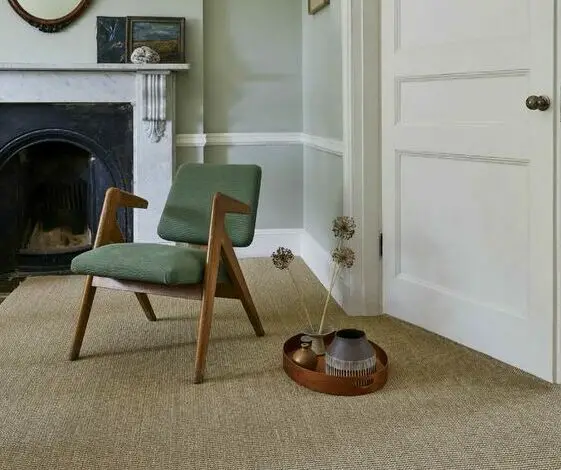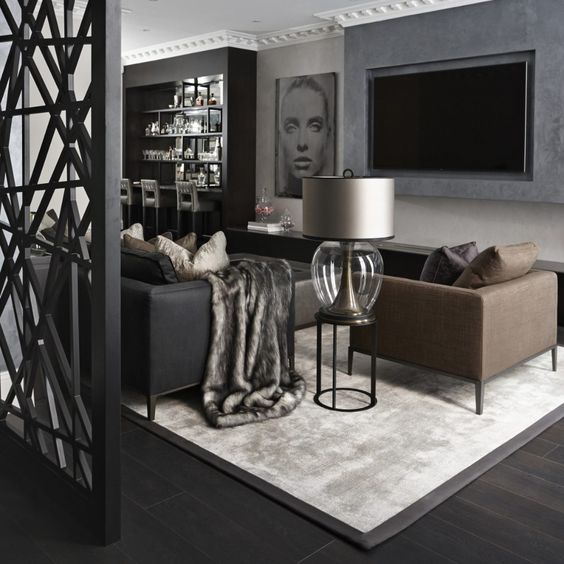Our Top Tips To Buy An Eco Friendly Carpet

They can be the most toxic items in your home. But never fear! Here’s how to buy an eco friendly carpet
By Chere Di Boscio
Look around your home. Which object do you think is the most unhealthy thing in there? Unless you’re a smoker with a cigarette lit or have a phone mast on your roof, it’s very likely your carpet.
In fact, carpeting is a leading cause of indoor air pollution. That’s thanks to the toxic materials used in the carpeting, padding and installation. Wall-to-wall is the worst, but even large rugs can contain these materials.
Carpeting, its backing and padding all emit “volatile organic compounds” or VOCs in the air. These refer to the toxic chemicals that give off fumes from the manufacturing process of the carpet, backing and/or padding. And don’t think it’s just carpets that ‘smell new’ that are the main offenders. A carpet can off-gas up to 5 years after it has been installed! The possible results? Asthma, skin rashes, eye, nose and throat irritation, headaches, shortness of breath or cough and fatigue.
But in addition to VOCs, carpeting can also act as a “sink” for chemical and biological pollutants including pesticides, dust mites, and fungi. This is even more the case if you don’t take your shoes off at home.
Want a cleaner, healthier home? Wondering how to buy an eco friendly carpet? Read on.
Image below: Sonya Winner Main image: knotistry.co.uk
How To Buy A Non Toxic Carpet

1. Look For The Right Size & Materials
It’s always better to go for wood floors made of sustainable timber such as bamboo, pine or oak. But if you must have carpeting, try to reduce the surface size of the material. In other words, it’s better to go for a floor rug than wall-to-wall.
Of course, the main factor in how to buy an eco friendly carpet is the material. Your floor covering should be an eco friendly carpet made of a natural fibres, such as:
- wool (which is self-extinguishing if a fire breaks out)
- TENCEL
- cotton
- jute
- sisal
- bamboo
- abaca fiber (banana family)
- seagrass
- coir (the agave plant fiber)
- silk.
The backing should also be made from a natural material like rubber. This is the best choice, as it’s not only sustainable, but also very dense. This helps prolong the life of the carpet and soundproofs the room.

2. Look for the Goodweave Mark
If you’re keen to know how to buy an eco friendly carpet, you’ll probably also want to buy an ethical one, too. This is especially important given the fact that it’s not unusual in the developing world for child labour to be used to create carpets. (Apparently, their little fingers make better knots).
Goodweave is an international, not for profit mark whose main aim is ending child labour in the rug industry. As a result, their certification programme, which began in 1994 in India, has been certifying rug designers to not only end illegal child labour, but provide consumers with a reliable mark for ethical brands.
There are also other luxury rugs designers, such as London based Bazaar Velvet, (whose work is pictured below). They proudly display the Goodweave logo on their site and tout the organisation in their bio.
Recognition like this within the industry is key to not only identifying a trusted rug designer but ensuring ethical standards going forward.

3. Find Inventive Eco-Designers
Do you want an eco friendly carpet or an ethical one? Or both?
A post on the Goodweave blog points out that those in the interiors industry don’t always make the distinction between ‘ethical’ and ‘eco friendly’. However, there are rug designers who find inventive ways to do both.
Namely, there’s Knots Rugs, whose designer Jurgen Dahlmanns noted that 5% of the raw materials used to make rugs never made it to the final product. He then decided to bridge the gap between ‘eco friendly’ and ‘ethical’ by creating a collection of rugs upcycling these offcuts.
Hand knotted rugs are created with more time, care and have a team of designers behind that who craft these amazing, bang-on-trend rugs. They work with high quality leftover materials, giving you the perfect rug for your home that will last for years to come.
Dahlmanns first became inspired to create eco-rugs while trekking in Nepal. He was impressed not only by the Nepalese traditions, but by the surrounding beauty of the natural world there, which made him realise he could be a guardian of the Earth through his work.
“It is my conviction that we bear responsibility for our actions, both as producers and as consumers. Everything we do has global and social implications, and we have an obligation to make sure that we cause no damage to the world and its population,” he says.
Another eco friendly carpet designer we love is Sonya Winner, pictured above. Her work is highly colourful, inventive, and contemporary.
Image: jacarandacarpets.com

4. Go Traditional
One of the best ways to buy an eco friendly carpet is to look for antique rugs. These look luxurious and bring timeless style to any room. But you need to know what to look for.
For example, there should be a slight sheen to wood rugs. This indicates a high lanolin content and durability. The more clarity of line there is in the design, the more skilled the weaver. So this is something to keep an eye on. The more the carpet resembles a painting, the better!
When a rug is dyed naturally, green, rose, saffron yellow and purple are highly valued shades. The rug will have more value if the design is a complete one-off. Even though hand woven rugs are unique in the sense that they may carry man-made flaws that machine made rugs wouldn’t have, they often follow the same patterns.
It’s worth getting a rug appraised. If you find a high quality antique rug that’s in good condition, it will only go up in value over time. Indeed, these kinds of rugs a great investment and something that can be passed down through the generations.
There are 3 main kinds of traditional rugs that we think add a touch of chic to your home, no matter what the era. Let’s go into detail on each, below.
Image: Abode rug by Elan Byrd

a) Kilims
One of our favourite types of eco friendly carpet are Kilims. There’s something irresistible about a Kilim that was woven a while ago. The colours will have slightly faded and the wool has softened. You know it’s coming from a world so different from our own, that it is, in the true sense of the word, exotic. In fact, Kilims hail from North Africa and the Middle East. Still today, the best Kilims in the world come from these regions.
Image credit: madebymood.com

b) Bayats
There is a certain look that this type of Persian rug acquires when it has been subjected to a few generations of life. It becomes, with the passing years, no longer solely a decorative piece, but part of the narrative to a story. The design is less prominent, the colours have faded and the wool has worn so that the warps and wefts finally have their moment in the light. Such a rug will give any room, traditional or modern, something special.
Image: thehandmaderugcompany.com

c) Flokati Rugs
These are perhaps the most simple, and most luxurious of rugs. Greek ones are made of pure wool, whilst even more luxurious flokati rugs are made from alpaca wool. In both cases, no animals need to die, making these a soft, furry option for vegetarians and animal lovers. They feel like a dream under the feet! These types of eco friendly carpet also lend a luxurious, ski resort feeling to your home, and can be washed in the bathtub with shampoo.
Image: Pinterest

- The Dangers Of Having Smart Meters At Home - July 2, 2025
- How To Keep Your Dog Or Cat Hydrated This Summer - June 12, 2025
- Are Hartdene Barns The UK’s Most Eco Friendly Homes? - June 6, 2025








